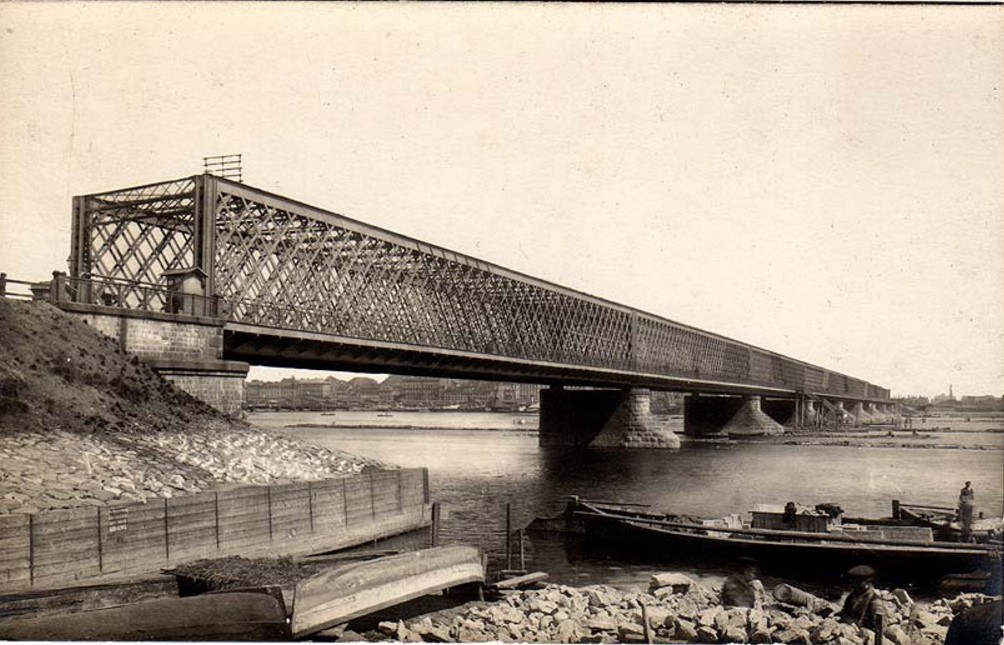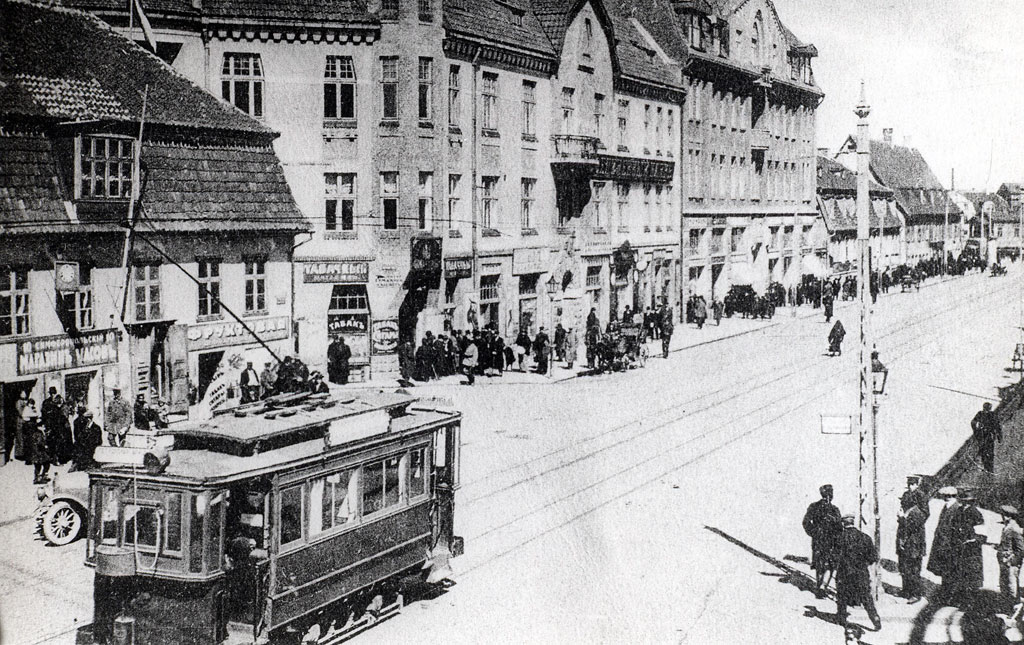|
Torņakalns Station
Torņakalns Station is a railway station in the Neighbourhoods in Riga, neighbourhood of Torņakalns in the Zemgale Suburb, Riga, Zemgale Suburb in Riga, Latvia, located on the Pārdaugava, western bank of the Daugava River. Torņakalns Station is located on the Riga–Jelgava Railway, Riga–Jelgava and Torņakalns–Tukums II Railway, Riga–Tukums railway lines. The station opened in 1868 as the northern terminus of the Riga–Jelgava Railway, Riga–Jelgava railway line. From 1872, however, all trains were continued from the station via the Iron Bridge, Riga, Iron Bridge across the Daugava to the current Riga Central Station. In 1877, Torņakalns Station also became the eastern terminus of the Torņakalns – Tukums II Railway, Torņakalns–Tukums railway line. History The terminal of Riga–Jelgava Railway, was opened in 1868 and called ''Riga-Mitauer Bahnhof'' back then. This was a very important station, which secured the connection of Riga with Semigallia, but in 1872 on ... [...More Info...] [...Related Items...] OR: [Wikipedia] [Google] [Baidu] |
Railway Junction
A junction, in the context of rail transport, is a place at which two or more rail routes converge or diverge. The physical connection between the tracks of the two routes (assuming they are of the same gauge) is provided by turnouts (US: switches) and signalling. Overview In a simple case where two routes with one or two tracks each meet at a junction, a fairly simple layout of tracks suffices to allow trains to transfer from one route to the other. More complicated junctions are needed to permit trains to travel in either direction after joining the new route – for example by providing a triangular track layout.In this latter case, the three points of the triangle may be given different names, for example using points of the compass as well as the name of the overall place. Rail transport operations refer to stations that lie on or near a railway junction as a ''junction station''. In the UK it is customary for the junction (and the related station) to be named after the n ... [...More Info...] [...Related Items...] OR: [Wikipedia] [Google] [Baidu] |
Iron Bridge, Riga
The Iron Bridge () or Semigallia Bridge (''Zemgales tilts'') was a bridge that crossed the Daugava River, Daugava river in Riga, the capital of Latvia. It was built in 1871–72. The bridge was bombarded twice, during World War I and World War II, and was not rebuilt after the last war. The only remains of the bridge are its pillars in the river. References Bridges in Latvia Bridges completed in 1872 {{Latvia-bridge-struct-stub ... [...More Info...] [...Related Items...] OR: [Wikipedia] [Google] [Baidu] |
Pasažieru Vilciens
AS Pasažieru vilciens, operating as Vivi, is the sole passenger railway operator in Latvia, operating both electric locomotive, electric and Diesel locomotive, diesel trains on various lines throughout the country. Officially named ''Joint-stock company, AS "Pasažieru vilciens"'' (', abbreviated: PV), the company was founded in November 2001. It is fully owned by the Government of Latvia, Latvian state, with the Ministry of Transport (Latvia), Ministry of Transport acting as shareholder. History Pasažieru vilciens was established in 2001 through the merger of two separate companies, ''Elektrovilciens'' ("Electric Train") and ''PPU Dīzeļvilciens'' ("Diesel Train"), which were subsidiaries of the state-owned Latvian Railways, Latvijas Dzelzceļš (Latvian Railways, LDz). The company was created to separate domestic passenger services from other functions managed by LDz. Initially, Pasažieru vilciens was a 100% subsidiary of Latvijas Dzelzceļš, but in October 2008, it bec ... [...More Info...] [...Related Items...] OR: [Wikipedia] [Google] [Baidu] |
Transport In Latvia
This article provides an overview of the transport infrastructure of Latvia. Road system It is mandatory to keep headlights on while driving, even in daylight; most cars commercially sold in Latvia are equipped to make this automatic. Highways Length of the road system Railways Latvian Railways is the main state-owned railway company in Latvia. It's daughter companies both carry out passengers services as well as carry a large quantity of freight cargo, and freight trains operate over the whole current passenger network, and a number of lines currently closed to passenger services. There is also a narrow-gauge railway between Gulbene and Aluksne, operated by the Industrial Heritage Trust, using Russian and Polish built heritage rolling stock. Three narrow gauge trains a day operate on the 33 km route between the two towns. ''total:'' 2,347 km ''Russian gauge:'' 2,314 km gauge (270 km electrified) ''narrow-gauge railways, narrow gauge: ... [...More Info...] [...Related Items...] OR: [Wikipedia] [Google] [Baidu] |
History Of Rail Transport In Latvia
The history of rail transport in Latvia began with the construction in 1860 of a railway from Pytalovo to Dinaburg (now Daugavpils), 160 km in length, as part of the Saint Petersburg–Warsaw Railway. More intensive development of railways in Latvia commenced the following year, 1861, when the 232 km long Riga - Dinaburg railway was opened. It connected with the Saint Petersburg–Warsaw Railway, and thus joined the Latvian railways with the Russian rail network. For the rest of the second half of the nineteenth century, the intensive construction of railways continued. Lines constructed during that period included Dinaburg–Radviliškis, Mitau (now Jelgava)–Muravyovo (Mažeikiai), and others. From the 1890s, narrow gauge lines () were built to complement the broad gauge lines (). Most of the narrow-gauge railways were later converted to broad gauge, but then dismantled in the second half of the twentieth century. See also *History of rail transport *History o ... [...More Info...] [...Related Items...] OR: [Wikipedia] [Google] [Baidu] |
Rail Transport In Latvia
Rail transport in Latvia is done on Russian gauge. The main railway company is the state-owned Latvijas dzelzceļš (LDz), with its subsidiary Pasažieru vilciens (PV) providing passenger services. Historically Latvia had lot of different rail gauges, most notably standard gauge and narrow gauge. These were gradually replaced by the Russian gauge after the Occupation of the Baltic states, Soviet occupation of the Baltic states. The Rail Baltica project aims to connect Latvia and the other Baltic states to the European Standard-gauge railway, standard gauge by approximately 2030. Ten regional stations are planned in the section from Bauska to Salacgrīva. Although PV has been a monopolist in passenger train, in February 2022 the Road Transport Administration of the Ministry of Transport of Latvia announced the first market survey on potential private rail passenger service providers. Future expansion Rail Baltica is an ongoing Greenfield project, greenfield railway infras ... [...More Info...] [...Related Items...] OR: [Wikipedia] [Google] [Baidu] |
Torņakalns Memorial To Victims Of Communist Terror
Torņakalns Memorial to Victims of Communist Terror () is a monument located at Torņakalns Station in Riga, Latvia. The memorial place is dedicated to the residents of Latvia who were deported in June 1941. Initially, it was planned to place the memorial on the , but later it was decided to place it near the Torņakalns Station. The memorial is made up of five chipped stone figures, symbolizing "destroyed family hearths and three exiled generations". There is a goods wagon and a memorial to the deported Latvian residents near the station building. The memorial stone with the inscription "1941" is a rough boulder, it's 1.2 m high. The memorial stone near the station building was unveiled in 1990, its author is the sculptor , on June 14, 1996, a goods wagon was placed near the stone. The sculptor of the stone images of the memorial is , the architect is , it was opened on June 14, 2001, by the then president of Latvia, Vaira Vīķe-Freiberga Vaira Vīķe-Freiberga (; born 1 Dec ... [...More Info...] [...Related Items...] OR: [Wikipedia] [Google] [Baidu] |
Liepāja
Liepāja () (formerly: Libau) is a Administrative divisions of Latvia, state city in western Latvia, located on the Baltic Sea. It is the largest city in the Courland region and the third-largest in the country after Riga and Daugavpils. It is an important ice-free port. In the 19th and early 20th century, it was a favourite place for sea-bathers and travellers, with the town boasting a fine park, many pretty gardens and a theatre. Liepāja is however known throughout Latvia as the "City where the wind is born", likely because of the constant sea breeze. A song of the same name () was composed by Imants Kalniņš and has become the anthem of the city. Its reputation as the windiest city in Latvia was strengthened with the construction of the largest wind farm in the nation (33 Enercon wind turbines) nearby. Liepāja is chosen as the European Capital of Culture in 2027. Names and toponymy The name is derived from the Livonian language, Livonian word ''Liiv,'' which means "sand" ... [...More Info...] [...Related Items...] OR: [Wikipedia] [Google] [Baidu] |
Dubulti
Dubulti is the administrative center and the oldest part of Jūrmala, Latvia. History The settlement derives its name from the Lett Dubults, who had an inn there in the 15th century. Dubulti however is first mentioned in the 18th century. A fishing settlement was later formed. After the Patriotic War of 1812, Dubulti became a rest point for those going to Courland. The first vacationing noblemen visited the local beaches in 1814. The Germans once called Dubulti 'Judenburg' because of Jewish inhabitants who had rights to settle there. In 1841 the settlement gained an official name, Dubbeln (). Dubulti is situated where a meandering loop of River Lielupe creates an isthmus only wide. Erosion from the river was a major problem in the 18th century and threatened the village. The road running close to the river had to be relocated behind the closest land plots to the current location at Zigfrīda Meierovica prospekts. JŪRMALA, Nature and Cultural Heritage, Ed. LaimaSlava, Neputns ... [...More Info...] [...Related Items...] OR: [Wikipedia] [Google] [Baidu] |
Semigallia
Semigallia is one of the Historical Latvian Lands located to the south of the Daugava and to the north of the Saule region of Samogitia. The territory is split between Latvia and Lithuania, previously inhabited by the Semigallian Baltic tribe. They are noted for their long resistance (1219–1290) against the German crusaders and Teutonic Knights during the Northern Crusades. Semigallians had close linguistic and cultural ties with Samogitians. Name The name of Semigallia appears in sources such as ''Seimgala'', ''Zimgola'' and ''Sem'' 'e'''gallen''. The -gal element means 'border' or 'end', while the first syllable corresponds to ''ziem'' ('north'). Thus, the Semigallians were the "people of the northern borderlands" (i.e. the lower parts of the Mūša and Lielupe river valleys). Territory 1st–4th centuries Between the 1st and the 4th century the cultural area of Semigallian reached its maximum size. In the north, the territory spread the Gulf of Riga and included ... [...More Info...] [...Related Items...] OR: [Wikipedia] [Google] [Baidu] |
Torņakalns – Tukums II Railway
Torņakalns is a neighbourhood of Riga, Latvia located on the western bank of the Daugava River (neighbourhoods along this shore are collectively known as Pārdaugava). The name Torņakalns ('' English: Tower Hill'') derives from a fortified tower built in the Middle Ages close to the Daugava River to alarm the city of Riga in case of emergency and intruders about to cross the river. The tower does not stand nowadays. Overview Torņakalns was an early suburb to Riga, consisting largely of gardens and mansions. In contrast to the Soviet-built Zolitūde and Ziepniekkalns suburbs, there are plenty of gardens, parks, and monuments. Mārupes parks ('' eng.:Mary's Creek Park'') encircles the Māras dīķis ('' eng.:Mary's Pond''), which was once dammed by a mill. The Mārupe ('' eng.:Mary's Creek'') then continues into Arkādijas parks ('' eng.: Arcadian Park''), where early 20th century landscaping provides an oasis from the city. History In 1940, the Soviet Union annexed Latvia ... [...More Info...] [...Related Items...] OR: [Wikipedia] [Google] [Baidu] |




